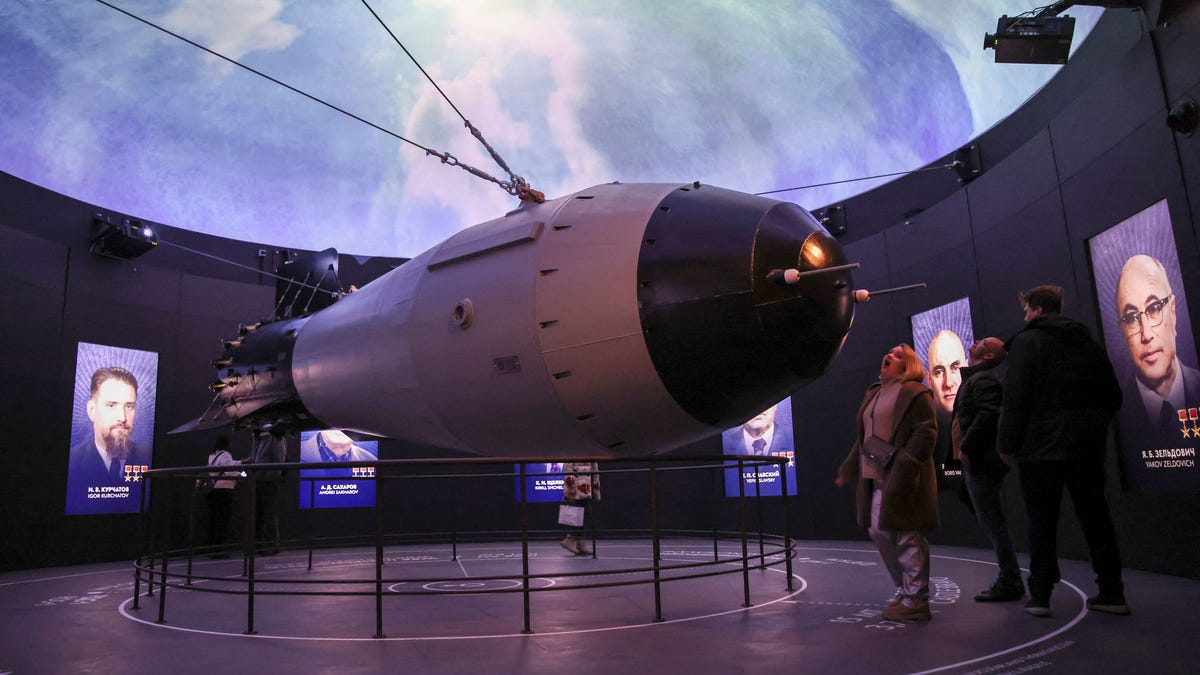Nuclear annilhilation has become one of the quieter swords of Damocles hanging over our heads on planet Earth; but it’s still there, ready to drop at a moment’s notice. But perhaps the most terrifying part? We have a rough idea of how many nukes still exist in the world, but that number is nothing more than a well-educated guess.
Using a mix of open-source satellite imagery and less high-tech methods like pouring over images of military parades, researchers concluded that there are around 12,512 nuclear weapons out there, but admit they don’t have a complete picture of the planet’s nuclear arsenal. The nine nations that maintain a nuclear arsenal have self-interested reasons to keep their number of nukes secret, of course. But what is good for national security is bad for humanity. From Vice:
Mat Korda, a Senior Research Fellow at the Federation of American Scientists (FAS), is part of a team of researchers that tracks the world’s nuclear weapons. Every year, they publish their informed estimates as the Nuclear Notebook at the Bulletin of the Atomic Scientists.
For Korda, it’s not just about the numbers, which investigators have accepted will not be completely accurate. “The story is not whether or not the number has gone up or down,” he told Motherboard. “The story is about the broader trends we’re seeing in each country’s arsenal. What we’re seeing is that transparency is going down, military stockpiles are going up. The weapons themselves are getting more sophisticated. Some of these legacy weapons from the Cold War era are getting decommissioned and we’re getting new types of weapons. All of this comes together to make nuclear use more likely than at any time since the end of the Cold War.”
At the height of the Cold War in 198 the planet contained over 60,000 nuclear weapons. While that number has gone down, over 12,000 nukes is still not good. Nowadays, researchers use everything from treaties, to interviews with blow-hard generals, to images of military parades to keep an eye on nukes across the globe. But the most useful tool is satellite imagery, which gives researchers the most up-to-date information on what is happening with nukes.
Satellite imagery helped Korda and others uncover the recent buildup of intercontinental-ballistic missile silos in China. It also shows how this work is collaborative, with the work of one person or group building on that of another. In 2019, Hans Kristensen, a colleague of Korda’s at FAS, discovered new kinds of missile silos near training areas in Jilantai, China.
“The really interesting thing about Jilantai is, not only were they deploying 16 silos in that area, but they were also covered with these really interesting inflatable domes like you might see covering a tennis court in winter,” Korda said. “It was very clear that those domes had a direct connection to China’s ICBM program, because we can look at satellite imagery and see they were covering silo holes. We could also see types of material that would be used to make silo walls. At that point, we had a signature we could go and use for larger deployments.”
Right now, two nuclear powers are engaged in war with smaller, weaker neighbors. The situation should renew all of our anxieties over this long-forgotten, potentially world-ending technology. It doesn’t help that nukes occasionally go missing. The U.S. has recorded 32 “broken arrow” events between 1950 and 1980, with everything afterwards considered classified. And after the fall of the USSR, everything from nuclear missiles to nuclear batteries went missing when the country was plunged into chaos.







